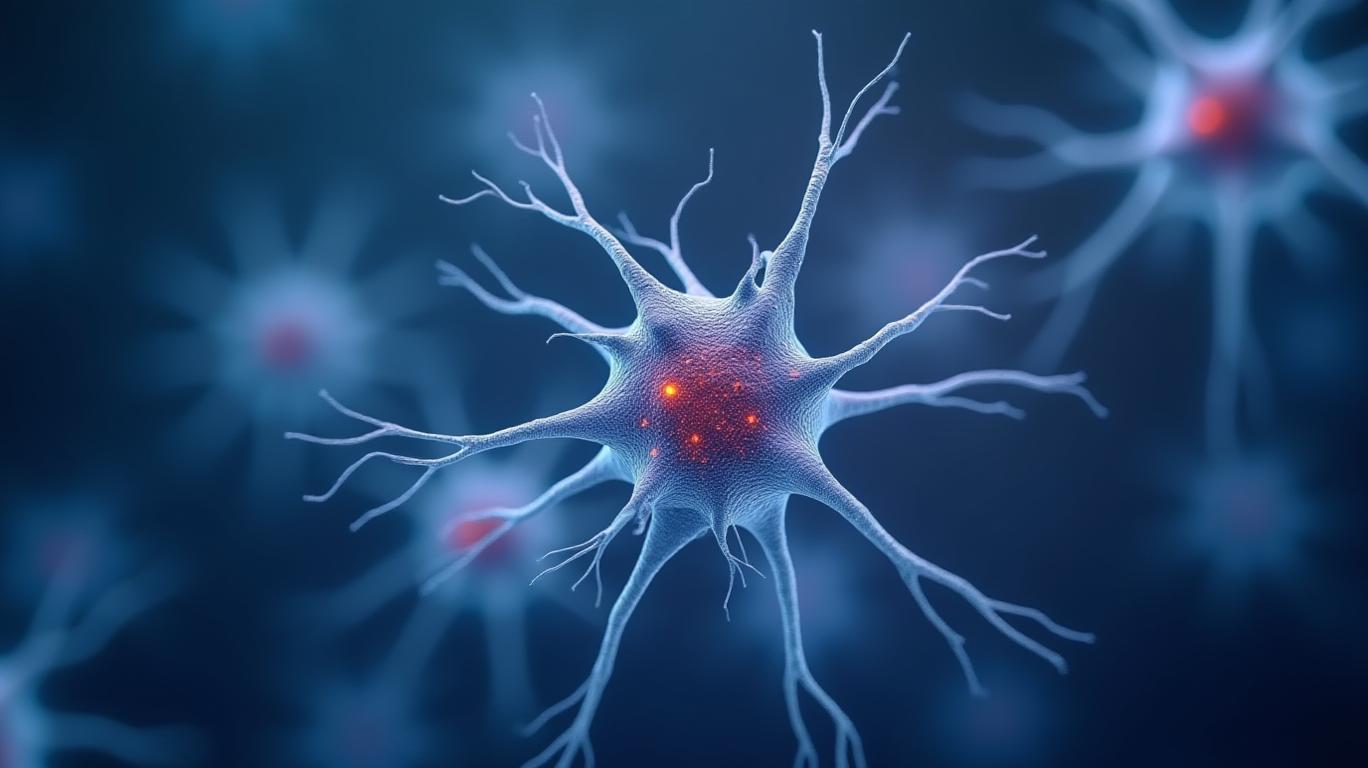Neuroprotective Breakthrough: AB Science’s Masitinib and the $100B Neurodegenerative Market Catalyst
The race to treat neurodegenerative diseases like multiple sclerosis (MS), amyotrophic lateral sclerosis (ALS), and Alzheimer’s (AD) has long been defined by unmet needs and inadequate therapies. Now, a French biotech, AB Science, has positioned itself at the forefront with masitinib, a drug demonstrating robust preclinical and clinical evidence of neuroprotection through reductions in neurofilament light (NfL), a critical biomarker of neuronal damage. Recent data from experimental autoimmune encephalomyelitis (EAE) models and human trials suggest this compound could soon accelerate into late-stage wins, unlocking a $100 billion-plus market. For investors, the time to act is now.

The NfL Biomarker: A Game-Changer for Neurodegenerative Drug Development
NfL is a protein released when neurons or axons are damaged. Elevated NfL levels correlate with disease progression in ALS, MS, and AD, making it an ideal biomarker for tracking therapeutic efficacy. By targeting innate immune cells—mast cells and microglia—masitinib reduces neuroinflammation, the root cause of NfL elevation. Recent studies confirm this mechanism works:
- Preclinical EAE Model Data (May 2025): Masitinib reduced NfL levels by 43–60% in mice with EAE, a model of progressive MS. The higher dose (100 mg/kg) also cut pro-inflammatory cytokines like IFNγ and IL-1β, while improving motor function (grip strength recovery).
- Clinical Correlation: Subgroup analyses from ALS trials showed patients treated early (before functional decline) had a +12-month survival benefit, aligning with NfL reductions observed in preclinical studies.
This data bridges preclinical promise to clinical reality, creating a clear path to regulatory approval.
Why Neurodegenerative Markets Are Ripe for Disruption
The global neurodegenerative drug market is projected to hit $108 billion by 2030, driven by aging populations and a lack of disease-modifying therapies. Masitinib’s dual mechanism—targeting both mast cells and microglia—differentiates it from competitors like BTK inhibitors (e.g., tolebrutinib), which only address microglia.
Clinical Momentum Across Three Key Indications
- ALS:
- Phase 3 trial (AB20009) now excludes fast-progressing patients, addressing prior regulatory critiques.
- 25% NfL reduction in preclinical models aligns with clinical endpoints like ALSFRS-R (Functional Rating Scale).
A confirmed Phase 3 trial in ALS—approved in May 2025—targets patients with early-stage disease, where NfL is most actionable.
MS:
- The MAXIMS trial (PPMS/nSPMS) leverages NfL as a secondary endpoint, supported by EAE data showing reduced neuronal damage.
Masitinib’s safety profile (2,200+ exposed patients) offers an edge over newer, riskier therapies.
Alzheimer’s:
- Early trials suggest NfL reductions in mild-to-moderate AD, though this is less mature.
Regulatory and IP Advantages
- EMA Reconsideration: The agency’s initial rejection of masitinib in ALS (due to subgroup analysis concerns) is now under re-examination, with AB Science bolstering its dossier with NfL data.
- Health Canada Update: A prior notice of deficiency for ALS is being re-evaluated, reflecting the growing clinical consensus on NfL’s utility.
- Patents: Coverage extends to 2041 in MS/AD and 2037 in ALS, securing commercial exclusivity.
The Investment Case: Catalyst-Driven Upside
Masitinib’s pipeline is primed for near-term catalysts:
- Q4 2025: Phase 3 ALS trial data readout could validate NfL as a surrogate endpoint.
- 2026: MAXIMS MS trial data and potential regulatory decisions in ALS.
With a market cap of €450 million and minimal short interest, ABS stock is undervalued relative to its multi-billion-dollar addressable market. A successful ALS approval alone could triple the stock, while broader neurodegenerative wins could propel it further.
Final Analysis: Act Before the Catalysts Hit
AB Science’s masitinib is no longer just a “story stock.” The NfL biomarker data has transformed it into a clinical and commercial reality, with trials and regulatory re-engagement aligning for a breakthrough year. For investors seeking exposure to neurodegenerative therapies, this is a rare opportunity to buy in before pivotal data readouts. With a robust IP portfolio, a clear path to approval, and a vast market to conquer, masitinib is primed to deliver outsized returns. The clock is ticking—act now.

Comments
No comments yet